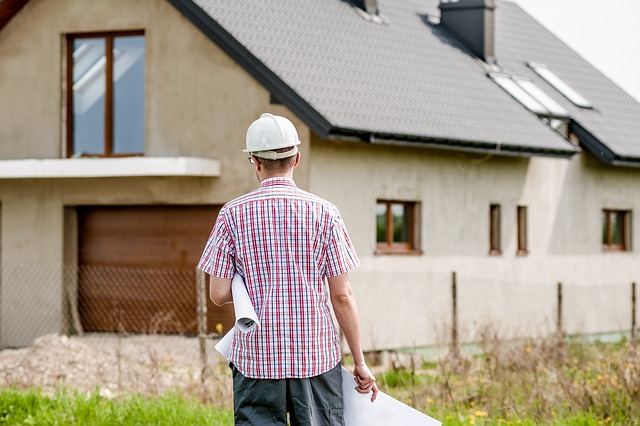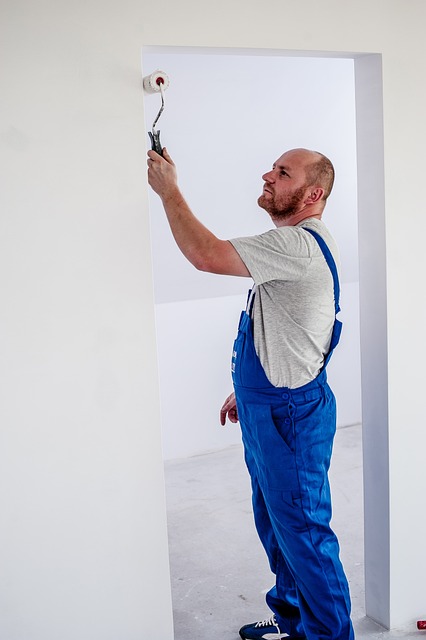Regular window maintenance is a key aspect of home repair and maintenance, crucial for maintaining both the structural integrity and energy efficiency of your residence. It involves assessing frame integrity, ensuring proper sealing, and verifying operability to prevent drafts or condensation. Upgrading to modern windows with better insulation and security can be a wise investment, improving comfort and reducing utility costs. When selecting new windows, consider factors like thermal performance, aesthetic appeal, durability, and how they'll complement your local climate and personal taste for curb appeal and property value enhancement. Proper window installation requires precise measurements and careful selection of windows suited to your home's needs, involving the removal of old windows, waterproofing with flashing, and aligning and securing the new units with insulation for maximum thermal efficiency. Post-installation, regular inspection, cleaning, and maintenance are necessary to ensure longevity and peak performance of your window systems. This includes addressing any sealing issues promptly, testing operability, and implementing protective measures during adverse weather. A proactive approach to window maintenance is essential for extending their life, guaranteeing optimal insulation, ventilation, and security within the scope of home repair and maintenance.
windows play a pivotal role in a home’s energy efficiency, security, and aesthetics. This article delves into the significance of window replacement within home repair and maintenance, offering insights into the latest trends and best practices. We will guide you through the essential steps for installing new windows in residential settings, ensuring optimal functionality and longevity. Additionally, we’ll explore effective post-installation care and maintenance strategies to preserve your windows’ integrity over time. Understanding and implementing these approaches can significantly enhance your home’s performance and appeal.
- Assessing the Need for Window Replacement in Home Repair and Maintenance
- The Step-by-Step Process of Installing New Windows in Residential Buildings
- Post-Installation Care and Long-Term Maintenance Strategies for Maintaining Window Integrity
Assessing the Need for Window Replacement in Home Repair and Maintenance

When considering home repair and maintenance, window replacement emerges as a significant aspect to ensure both the structural integrity and energy efficiency of a dwelling. Homeowners should regularly inspect their windows for signs of wear, such as drafts, condensation between panes, or difficulty in operation, which are indicative of aging or damaged windows. These issues not only affect comfort but also contribute to higher energy bills. Assessing the condition of windows involves evaluating frame material deterioration, checking for proper sealant around the frames, and verifying window functionality. Modern windows offer improved insulation properties and enhanced security features, making them a worthwhile investment in maintaining a comfortable and energy-efficient home environment.
The decision to replace windows is often influenced by a combination of factors, including thermal performance, aesthetics, and durability. It’s crucial to consider the local climate when selecting window types; for instance, homes in colder regions may benefit from windows with enhanced insulation against cold air. Additionally, homeowners should examine the aesthetic alignment of their windows with current design trends or personal preferences, as this can significantly impact the overall curb appeal and value of the property. By understanding the role of windows in home repair and maintenance, homeowners can make informed decisions that will lead to a more comfortable living space, lower energy consumption, and increased property value.
The Step-by-Step Process of Installing New Windows in Residential Buildings

When considering home repair and maintenance, window replacement and installation stand out as significant upgrades for residential buildings. A well-executed window installation not only enhances energy efficiency but also contributes to the overall aesthetics and durability of a home. The process begins with careful measurement and selection of windows tailored to the property’s specific needs. Once the appropriate windows are chosen, the installation process proceeds in a series of methodical steps designed to minimize disruption and ensure optimal performance.
The first step involves removing the existing windows. This is done with precision to avoid damaging the frame or surrounding structure. Next, carpenters prepare the opening by ensuring it matches the dimensions of the new window unit. The installation team then applies flashing around the perimeter of the opening to prevent water intrusion. The new window is set into place, and its alignment is double-checked. It’s secured with fasteners, and insulation is added to the frame for better thermal performance. Finally, the exterior and interior finishes are restored, completing the installation. Throughout this process, attention to detail is paramount to achieve a seamless integration of the new windows into the home’s structure. Proper sealing, alignment checks, and adherence to manufacturer specifications are crucial for longevity and performance. This meticulous approach to window replacement and installation falls squarely within the scope of essential home repair and maintenance practices.
Post-Installation Care and Long-Term Maintenance Strategies for Maintaining Window Integrity

Post-installation care is critical for ensuring the longevity and performance of new window systems in your home. Immediately after installation, it’s advisable to perform a thorough inspection of the windows to ensure they operate smoothly and are properly sealed. Any operable windows should be opened and closed several times to confirm ease of movement and proper function. Check for drafts or leaks around the frames and seals; these can compromise energy efficiency and home comfort. If detected, address these issues promptly by adjusting or replacing seals as necessary. Regular cleaning, both inside and out, will maintain clarity and prevent the accumulation of debris that could affect operation over time.
For long-term maintenance, establish a routine schedule to inspect windows at least once or twice a year. This should include examining the window frames, sashes, locks, and seals for signs of wear or damage. Lubricate moving parts with appropriate silicone-based lubricants to ensure smooth operation. During extreme weather conditions, take measures to protect your windows from hail, high winds, or flying debris that could cause breakage or structural damage. When it comes to home repair and maintenance, being proactive about window care can prevent costly repairs down the line. If any issues arise, address them quickly to avoid more significant problems. Additionally, consider professional cleaning and inspection services annually to maintain peak window performance and integrity. This diligent approach to window maintenance will not only extend their lifespan but also ensure they continue to provide optimal insulation, ventilation, and security for your home.
window upgrades significantly enhance home energy efficiency, ensuring a more comfortable living environment while reducing utility costs. The meticulous installation process, detailed in this article, underscores the importance of professional handling for optimal performance. Adhering to post-installation care and long-term maintenance strategies is paramount for preserving window integrity over time. Homeowners seeking to improve their property with new windows should prioritize both the initial installation and subsequent upkeep for sustained benefits. By investing in quality window replacements and responsible maintenance, homeowners can reap the rewards of enhanced comfort, energy savings, and an overall improved living space within their homes.
